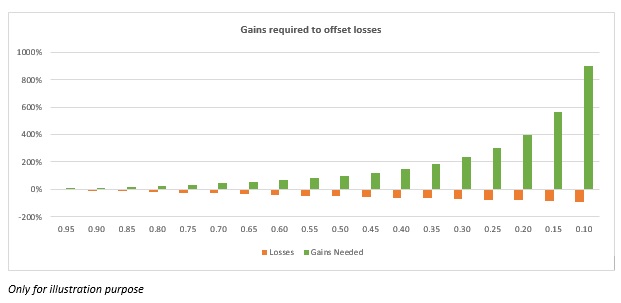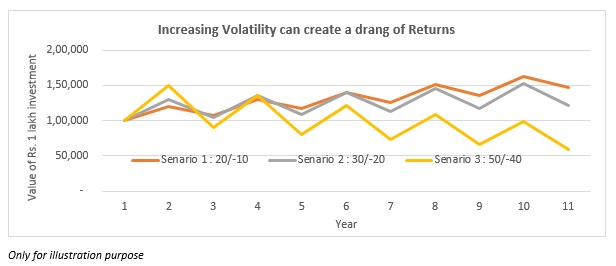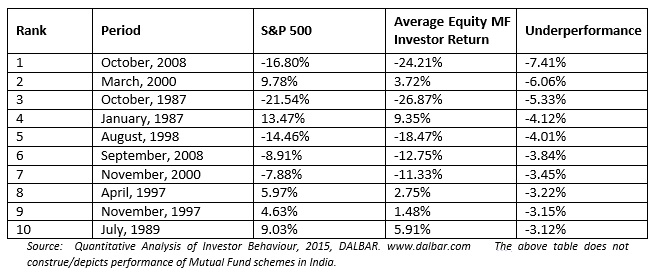
Dear Investors and Advisors,
For most of us, 2020 will be remembered as the Year of Volatility. It is the year when we are constantly trying to dodge one tricky event after another, in our day to day lives, from COVID-19, to cyclones and earthquakes, to locust attacks. It is also the year when the market has constantly thrown curveballs at us, from the equity crash and bond squeeze in March, to the subsequent rally in both asset classes in the last month, to the stellar performance of gold and tech stocks. Volatility is hard to digest, and it get even harder because in the information driven world, we tend to exaggerate it. Your MF NAV can only fall once a day, but between What’s App forwards, flashes on business channels, and countless emails, in a day, you feel the cut 8-10 times. Personally, my belief is that as investors, smart money management is about smartly managing volatility. Why? Well let’s go back to the basics. Inspired by the recent movie, Shakuntala Devi, today I will share four charts that describe in very simple but stark terms, the Math of Volatility.
Compounding takes time to kick in
We all know compounding matters. It’s the only free lunch in finance. Nothing like a few numbers to tell this story. The table below shows how an investment of Rs 1 lakh, at different rates of return, grows over time. The graph below tells the same story visually.
There are two things I learn from this table. One is that the real magic of compounding, when the lines really take off, really kicks in after a lot of time has passed, almost 20 years. Good investments are like good single malts – they must sit in the cask for years and years, across weather and conditions, and somewhere between 15-20 years point they start becoming valuable. The second thing is that while in the short term there is no big difference between 10 and 12% return, in the long term it really matters. Returns and volatility define the result.
Growth of Rs. 1 lakh at various rates and for various period

Big losses are big blackholes
Nobody likes to lose money. We dislike losing money much more than we like making money. Headlines don’t help. When markets crack 5% in a day, you are more likely to see articles converting percentage losses to rupees (because values feel more real than percentages) like “X crore of rupees of market capitalization wiped out”, than when markets rise 5% in a single day.
If you have Rs 100,000, and lose 20%, what percent return do you need to recover? 25%. However, if you lose 50%, what percent return do you need to recover. 100%. The graph below illustrates this more drastically – if Rs 100,000 falls to various levels, what do you need to recover. As you sink deeper into the loss well, it is exponentially harder to come back. Big losses are big blackholes, and thus need to be avoided.

Volatility is bad for the health of returns
Did you know most of us experience either bad roads, or bad air quality, or both in our day to day lives? Though none of them really matter in our everyday lives, but over years they add up, and damage your car or health. Volatility is like a bumpy road or bad air conditions for returns.
It has a funny way of throwing financial math off course. Recently, I saw a social media post on a category of funds, showing their performance in a market crash, then the performance in a market rally and then adding it up. Unfortunately, it doesn’t work that way. Let’s do a simple example. Which of the three scenarios is better, repeated for 10 years?
- Up 20% one year, down 10% the next year.
- Up 30% one year, down 20% the next year.
- Up 50% one year, down 40% the next year.
The graph below gives you the answer – they all look the same, but they aren’t the same. Volatility drags your returns lower.

Chaos brings out the worse in us
Did you know Chaos and volatility bring out the worse in humans, especially investors? Negative extremes often – in life and money, throw our ability to act rationally out of the window.
Studies suggest that some investors on average do worse than the total market, because of their own behavioural biases. What is interesting though is a recent study by DALBAR, highlighted below, suggested that the biggest instances of underperformance happen when markets go through extremes. It doesn’t take a genius to guess why this would happen. The attempt to time markets, chase one theme or another, jump from equity to overnight funds at the wrong time, all hit us and our portfolios.

If basic math shows volatility is an enemy – for compounding, for the health of our returns, and for our own behaviour, it is best to stay away from this enemy. My favourite approach for this has been asset allocation. Diversification diffuses volatility in the most predictable manner possible, by blending different assets together. It’s also easy to do – either through basic asset allocation yourself between equity or debt, or my own personal choice – using asset allocation / balanced advantage funds to do this. Two of my favourite lines from the legendary poets are, “Safar mein dhoop toh hogi, jo chal sako to chalo” and “Tumko dekha toh yeh khayal aaya, zindagi dhoop tum ghana saaya”.
Investing is that “safar” where volatility is the inevitable “dhoop”. Use asset allocation as the “chaaya”.
Happy investing!
Radhika
Trending Articles
MUTUAL FUND INVESTMENTS ARE SUBJECT TO MARKET RISKS, READ ALL SCHEME RELATED DOCUMENTS CAREFULLY.















